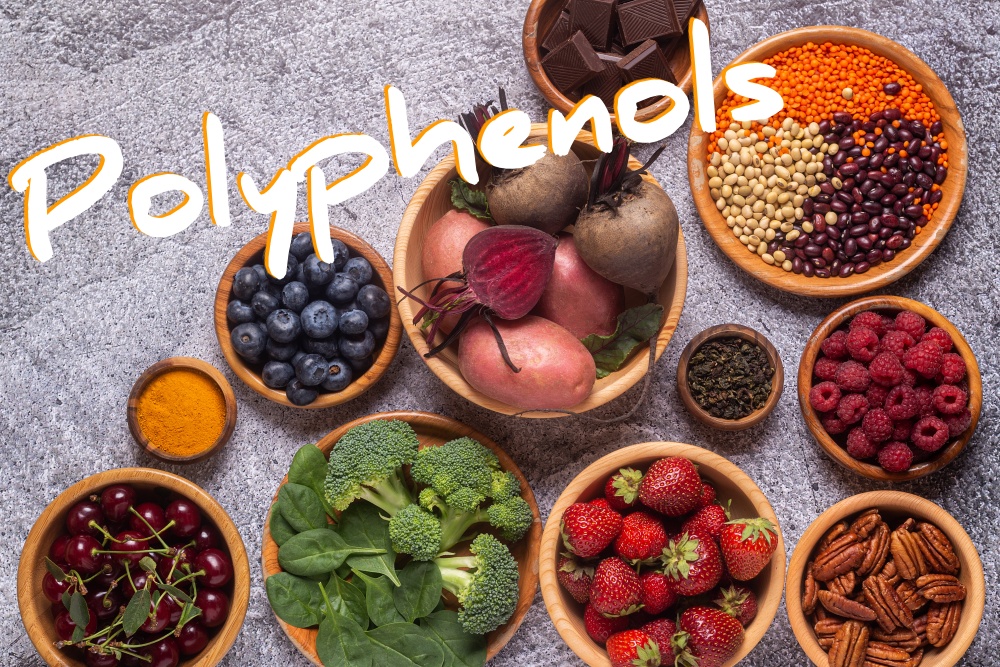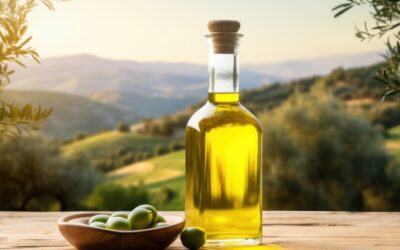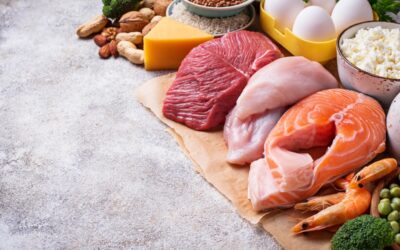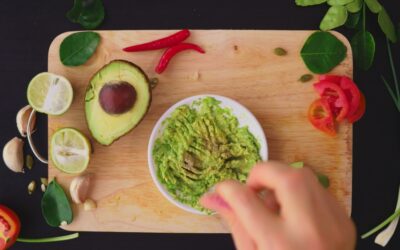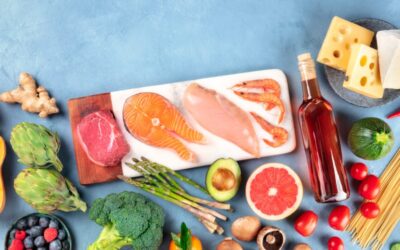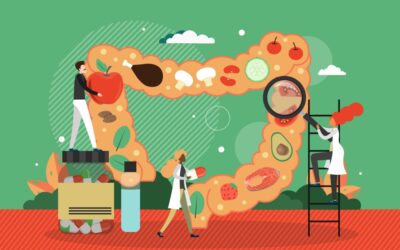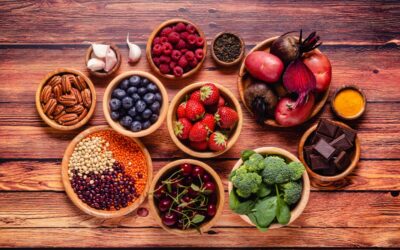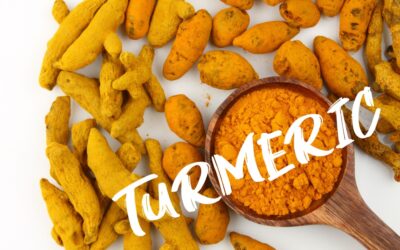I have long believed that a diet of fruits, vegetables, and seeds had a positive impact on overall health. A great example are studies looking at people who eat a Mediterranean diet (diet with a high concentration of fruits, vegetables and legumes). The reason might be in part due to polyphenols.
Polyphenols are naturally occurring compounds found in fruits, vegetables, and herbs and spices.
Plants make polyphenols to protect against internal and external stresses (free radicals and UV/insects/fungi..etc)
Evidence now exists that these same chemicals have a beneficial impact on mediating cellular processes involved in inflammation and oxidative stress to protect against metabolic and neurodegenerative disorders (this includes the natural neurologic degradation of ageing)
In this article, we will uncover the impact of dietary polyphenols, their role in modulating disease and maintaining human health and performance.
What are polyphenols?
Polyphenols are a complex category of nearly 8,000 molecules that are naturally occurring in plants such as vegetables, fruits, herbs, and spices. The total absorption of polyphenols in the standard diet is 1g/day.
In plants, these molecules are involved in defense against UV radiation and pathogens and may have similar protective properties in human cells. There is growing evidence that polyphenolic compounds are involved in strengthening our own defense mechanisms via their impact on strengthening our immune system.
Types of polyphenols
There are four main groups of polyphenols including phenolic acids, flavonoids, stilbenes, and lignans. Depending on the specific type of polyphenol molecule, will determine how it is absorbed and utilized by the human body when consumed in our diet.
Phenolic Acid
Of the four categories, phenolic acid makes up one third of the polyphenols found in humans.
They are found in seeds, skins of fruits, and leaves of vegetables. Polyphenol acids are found in legumes, oilseeds, fruits, vegetables, tea, and herbs. They can act as an antioxidant by neutralizing harmful free radicals They are also involved in breaking the chain reactions that are initiated by free radicals. In other words, they can destroy the “enemy” and/or the road the enemy is traveling on.
They are divided into two groups. Hydroxybenxoic acid, and hydroxycinnamic acid.
Food Sources
Hydroxybenzoic Acid: Nuts, red wine, tea
Hydroxycinnamic acid: coffee, cherries, pear
Flavonoids
Flavonoids comprise the most common group of plant polyphenols. More than 4000 different flavonoids have been identified and are credited for the rich colors of flowers, fruits and leaves. Fruits often contain between 5-10 different flavanols. Flavenoids include flavonols, flavones, flavanol, flavanones, isoflavonoid, anthrocyandicin, and proanthocyanidin. The most meaningful action of flavonoids is their ability to neutralize free radicals (more on this in a little bit). Flavonoids are also known to oxidize low density lipoproteins and therefore could protect against cardiovascular disease.
Food sources
Flavonols: onions, kale, grapes and red wine, tea, peaches, berries, tomatoes, lettuce, scallions, broccoli
Flavones: parsly, red peppers, celery, chamomile, peppermint
Flavanones: lemons, limes, oranges, grapefruit
Isoflavones: soy products, fava beans
Anthocyanins: red and purple grapes, red wine, cranberries, blueberries, strawberries, blackberries
Since their biosynthesis is dependent upon light, the concentration within a fruit vary greatly.
Lignanes
Lignans are found in relatively low amounts in seeds, grains, fruits and vegetables. The foods with the highest amount our flaxseeds and sesame seeds.
Stillbenes
Stillbenes aren’t as common as other polyphenols. There are only two, resveratrol and pterostilbene. Resveratrol is quite well known given it is found in wine. However, the amount of resveratrol that can be absorbed from consuming wine is a controversial topic. And my opinion is that the risks associated with alcohol consumption far outweigh the “antioxidant benefits”.
Polyphenol Absorption
The chemical structure of polyphenols determines its absorption rate, degree, and how the chemical behaves in the body. These factors are influenced by the joint ingestion of other compounds including fibers, high fat diets, and the consumption of alcoholic beverages. Futhermore, polyphenols are absorbed in the stomach, the intestine and colon or are eliminated in feces.
Polyphenol compounds are not ingested on their own. They are typically attached to other compounds and thus must be “liberated” from these other compounds prior to absorption. Stomach acids can liberate some flavonoids such as epicatechin and catechin. However, flavonols are not liberated in the stomach and will become a player further down in the digestive track. Chlorogenic acids such as caffeic acid, ferulic acid, and p-coumaric acid are liberated in the stomach and absorbed. Long story short, the majority of polyphenol compounds will be absorbed in the small intestine and colon.
It is important to note that the absorption rate of polyphenols varies greatly between individuals and therefore information regarding polyphenol absorption is still being investigated.
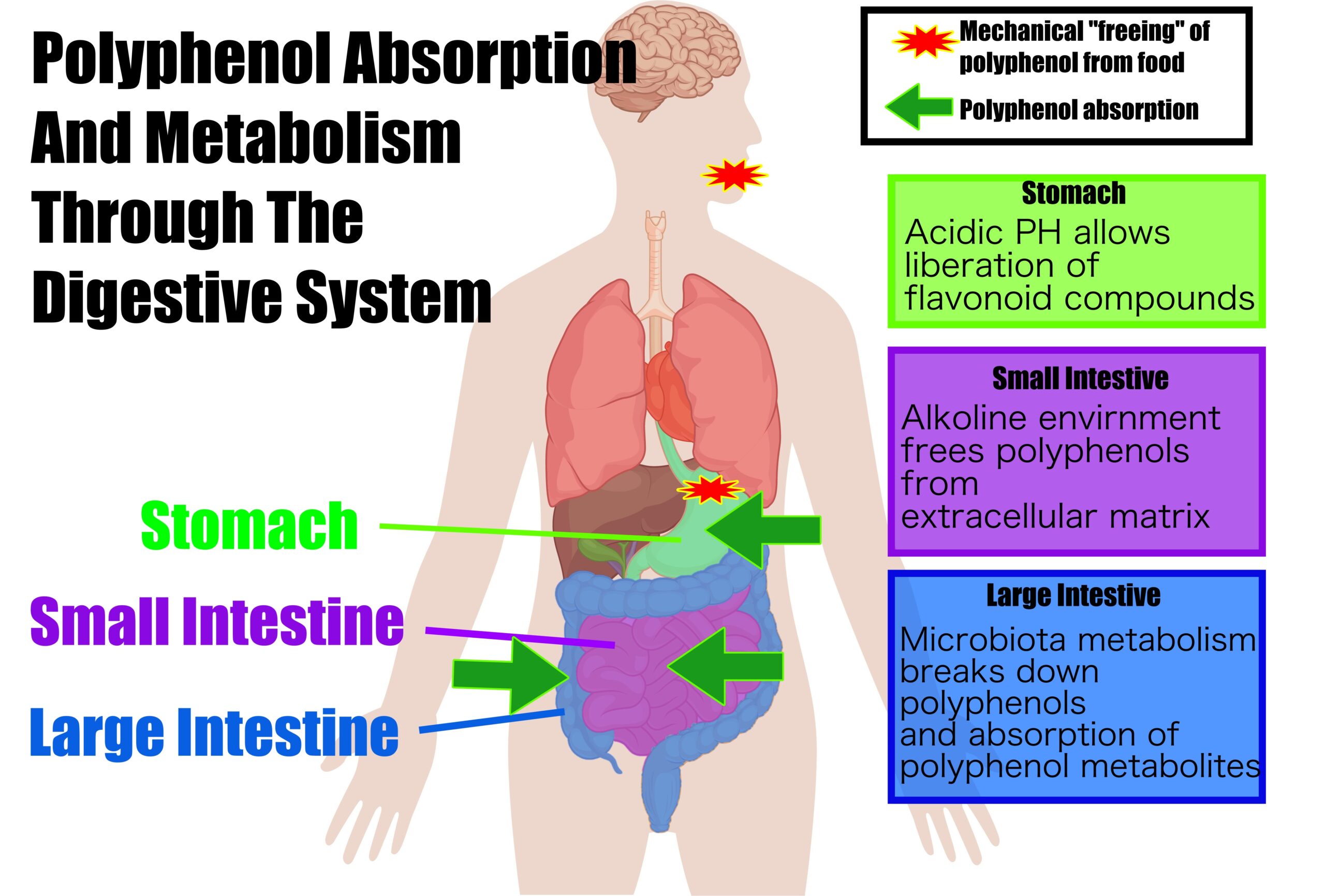
Health Benefits of Polyphenols
The main health benefit of polyphenol compounds relate to their role in neutralizing the free radicals reactive oxygen species (ROS) and reactive nitrogen species (RNS). ROS and RNS are unstable molecules naturally produced by every living human cell. At low levels, these molecules are beneficial in that they fight off foreign invaders, assist in timely cell death, and help cells to communicate with one another. However, an overabundance of ROS and RNS can damage the building blocks of the cell (lipids and proteins) and DNA. This is referred to as oxidative stress. Oxidative stress is implicated in most diseases and in the degenerative processes associated with aging.
Now, back to the polyphenols.
Antioxidant and Anti-inflammatory Benefits
The most notable effect of polyphenols is their ability to reduce inflammation which is the root cause of many, if not all, non-communicable diseases.
Polyphenols, generally speaking, neutralize ROS and RNS molecules so that they are no longer harmful. These chemicals, via their chemical bonds, also act as a road block to some of the downstream chemical reactions of ROS and RNS. In other words, polyphenols can attack the enemy (ROS and RNS) directly and/or destroy the road the enemy is traveling on.
Almost all polyphenols exhibit antioxidant properties and this forms the basis for their purported beneficial health effects associated with conditions such as cancer, cardiovascular diseases, neurodegenerative diseases and aging
Heart Health
Eating a diet rich in polyphenols may also improve your heart health. Oxidative stress has been highly implicated in endothelial damage (damage to blood vessel walls). This is due in part to a depletion in nitric oxide (NO). NO is an important factor in relaxing the blood vessel walls. Nitric oxide depletion is a known risk factor for cardiovascular disease. Furthermore, the oxidation of low density lipoprotein (LDL) is one initiating factor in generating atherosclerotic plaques.
This combination of decreased NO, and increased atherosclerotic plaques can cause narrowing of blood vessel walls and increase risk for blood clot formation (causing strokes and heart attacks). This “pressure overload” can lead to structural changes in the heart. Protein kinase B (PKB) has been found to be elevated in patients with hypertension (high blood pressure). Finally, angiotensin converting enzyme (ACE) is also a crucial factor in causing high blood pressure. Ace inhibitors reduce oxidative stress and are used to lower blood pressure.
A mechanism to prevent atherosclerosis is to protect the endothelium, reduce oxidation of LDL, and repress proinflammatory cytokines (inflammatory chemicals).
Polyphenols have potential in modulating NO, and inflammatory cytokines.
Resverotral might have an important role in stimulating SIRT1, modulating adenosine monophosphate kinase (AMPK) which is a signaling pathway that influences fatty acid and lipid metabolism. Additionally, as stated several times, the anti-inflammatory effects of polyphenols can mediate most of the mechanisms in the development of cardiovascular disease.
The most meaningful mechanisms that resveratrol can protect the heart against cardiovascular disease is by preventing the maladaptive structural changes to the heart wall via its impact on hypertension, pressure overload, and blood vessel narrowing (vascular stenosis).
Blood Sugar
Flavonoids, curcumin, and resveratrol are all polyphenols that may help to regulate blood sugar.
In animal studies, 200 mg of curcumin/kg elevated insulin levels and lowered the free fatty acid, triglyceride, cholesterol and glucose level in the blood and reduced lipid oxidation in mice. Other studies have also shown that curcumin reduced adiposity which will also have a positive impact on blood sugar regulation.
Resveratrol has been shown to counteract TNF-alpha which through different mechanisms will downregulate the secretion of several adipokines (inflammatory chemicals released from fat cells).
Both curcumin and resveratrol protect against pancreatic b-cell dysfunction known to induce hyperglycemia and insulin demand.
Healthy Skin
Inflammatory skin disease affect people of all ages and all skin types and appears to be caused by both genetics and environmental factors. Glucocorticosteroids (anti-inflammatory medication) are commonly used to manage these skin diseases. But steroids and immunosuppressives can only be used for a short time because of their adverse effects.
UV radiation is involved in the development of severe skin conditions, including photoaging, immune disorders, and skin cancer. As stated earlier, polyphenols protect plants against the harmful effect of UV radiation. Estrogen deficiency is also associated with deteriorating skin health.
The anti-inflammatory and immune regulating effect of polyphenols might be the most meaningful mechanism as it relates to improved skin health.
Anti-aging
Aging is positively correlated with an increase in oxidative stress. The most simplified explanation as to why this correlation may exist is that cell metabolism becomes slightly less efficient and as a result an overabundance of free radicals. This “wearing out” phenomenon is most likely impacted by the amount of exposure to environmental toxins, processing of food, and infections.
Resveratrol has been the most widely studied in its impact on exhibiting anti aging properties. Its main mechanism is the ability remove free radicals (radical scavenging)
Other stilbenoids were found to block DNA oxidation (via multiple events).
Similarly, flavonoids were found to exhibit antioxidant properties as well as radical scavenging.
In recent years, animal and human studies are demonstrating a link between aging and nutrition.
With aging, pro-inflammtory processes combined with a less efficient anti-oxidant mechanisms may be implicated in a higher burden of neuroinflammation. It is believed that this is part of the root cause of neurodegenerative processes impacting working memory and short term memory. A review of human randomized controlled trials 66 studies were reviewed and 33 founds that polyphenol supplementation had some positive impact on at least one memory outcome measure. One study showed that certain parts of the hippocampus (key brain area involved in memory) was activated after polyphenol consumption. It is important to note that this review did not use some of the gold standard tools to evaluate the quality nor risk of bias. Futhermore, the studies that were reviewed had small sample sizes and to make a more confident conclusion regarding the link between polyphenol compounds and working memory will require larger studies.
Conclusion
It is clear that people who adhere to a Mediterranean diet, rich in fruits and vegetables, have a lower risk of most diseases. However, this might be due to several lifestyle factors and not solely due to diet. Furthermore, polyphenols are difficult to study in the human body and thus there are no “absolute conclusions” regarding bioavailability (the degree to which a substance is absorbed and used by the body). With that said, the health benefits associated with a diet rich in these chemicals can’t be denied. Furthermore, the rich colors, flavors and aromas of that polyphenols provide is not just about “health”. It is about creating an eating experience that can stimulate all of our senses that can add quality to our years and our day to day life.
Articles You Might Be Interested In:
Processed Foods: Balancing Convenience, Safety, and Nutrition
Today, people are eating more processed food compared to the past few decades—and it’s easy to see why. It’s conveniently available, making it an absolute time-saver in the kitchen. It’s also usually cheaper and tastier than whole, natural foods while offering a...
Benefits of Olive Oil and How To Use It in the Kitchen
Olive oil consumption is steadily increasing, and it’s easy to see why. It’s rich in antioxidants and omega-3s that keep your body in peak health. The oil is particularly beneficial in its least processed form: cold pressed extra virgin olive oil. The widespread...
Mindful Eating: The Moment-to-Moment Experience That Improves Your Quality of Life
Do you watch television or talk to a loved one over text while you eat? Time and again, cognitive science has proved that the human mind is incapable of performing two or more tasks at once. But, living in today’s modern, fast-paced world, we barely notice when we’re...
12 Clever Ways To Healthy Eating on a Budget
Inflation and supply-chain disruptions have caused food prices to shoot up more quickly than in previous decades, making every trip to the grocery a costly and tricky affair. Despite the fact that food has become more expensive than ever, the federal minimum wage...
The power of protein on weight management
Weight management can be a challenging journey for many individuals, but with the right approach, achieving a healthy and sustainable weight is possible. Among the various factors that influence weight loss success, the role of protein cannot be overstated. Protein is...
Avocados: The Superfood that is SUPER good for you
Move aside, apples, because there's a new health-conscious favorite in town that's ready to steal the spotlight. Enter avocados, the green wonders that can humbly boast about their irresistible taste and creamy texture. But even more so about their health benefits....
Is a meat diet healthy?
The impact of meat consumption on health is a complex and debated topic. The vegans will give a compelling argument that meat will kill you. And of course, the “carnivore” (person who primarily eats meat) will give a compelling argument that meat is the healthiest of...
Unveiling the Health Secrets Within: Understanding the Gut Microbiome
The human body is home to trillions of microorganisms, forming a complex ecosystem within our gastrointestinal tract (GIT) known as the gut microbiome. Long overshadowed by the spotlight on human cells, this intricate community of bacteria, viruses, fungi, and other...
Antioxidants: A beginners guide to understanding these powerful chemicals
Cardiovascular disease and cancer are responsible for 44% of deaths in the US. 6.2 million Americans are living with Alzheimer’s disease and nearly 1 million with Parkinson’s disease. All of these diseases have one thing in common, oxidative stress. But there is...
Turmeric: Health Benefits and Food Sources
There is a growing interest in people wanting to take control of their health and “longevity”. With this in mind, curiosity is growing surrounding the best “diet” for overall health and disease prevention. And of course, the jury is still out on whether or not there...

